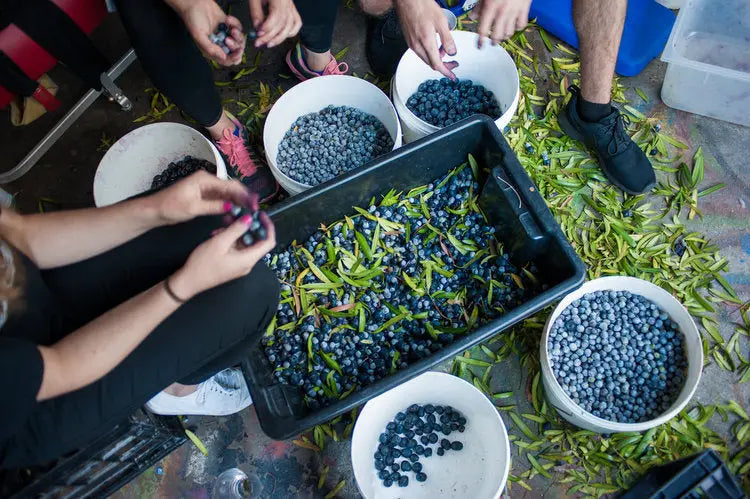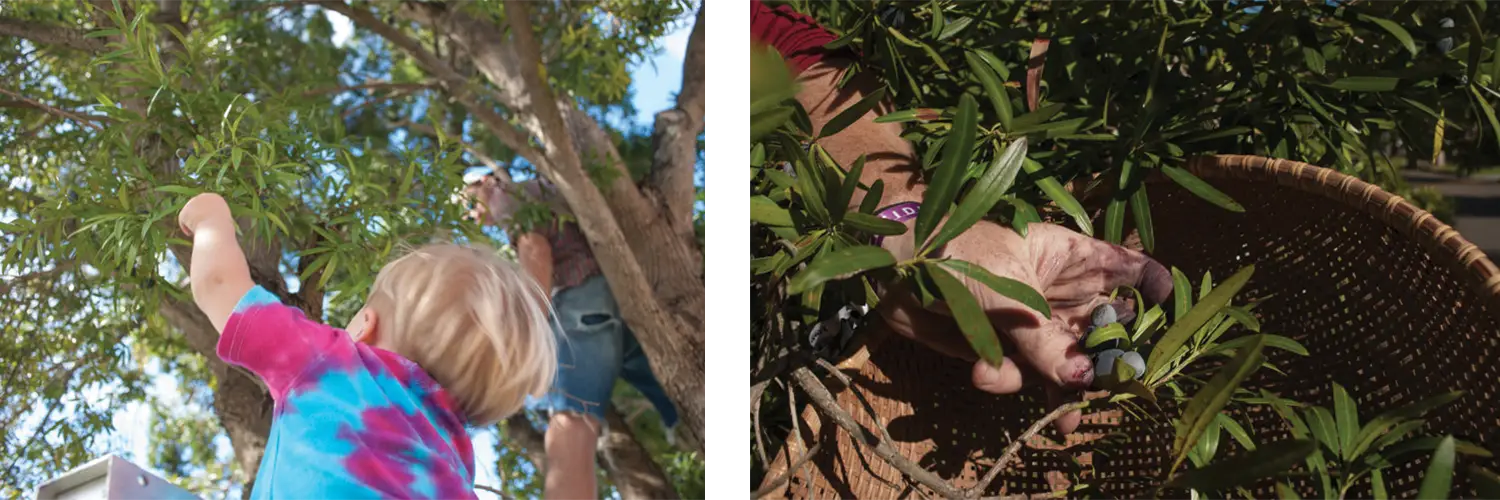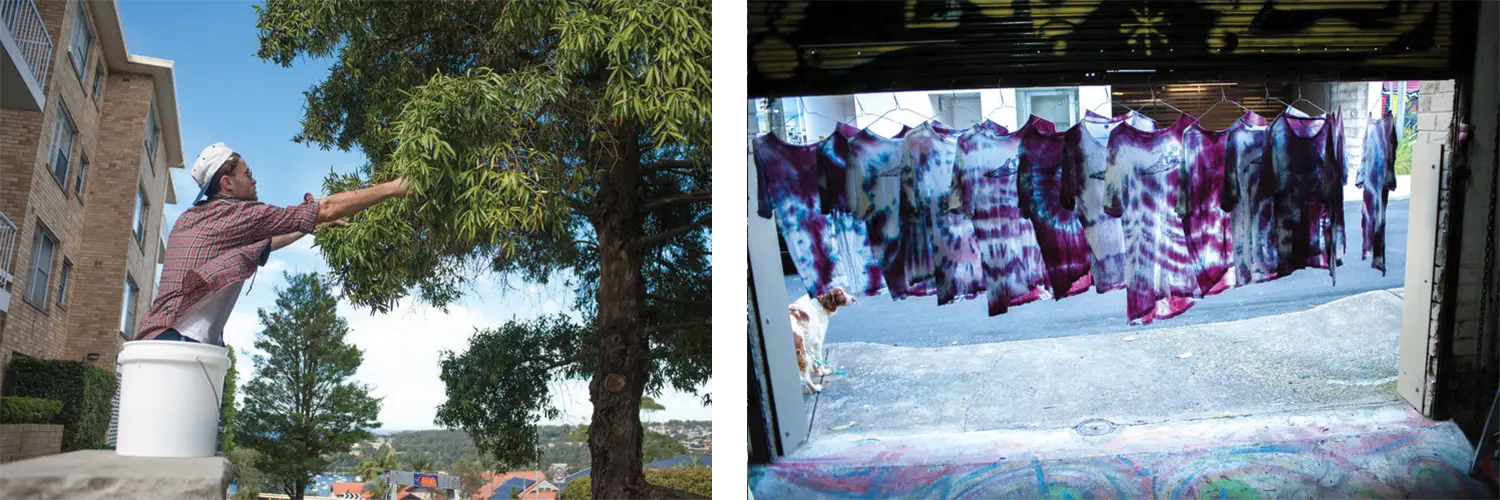Autumn at Trolley'd brings a special excitement with the harvest of the Illawarra Plum, or Podocarpus Elatus. Known regionally as Goongum up north and Daalgaal in the south, and also by names like Gidneywallum, Plum Pine, and Brown Pine, this versatile fruit is a cocktail enthusiast's dream. Dive into the vibrant world of mixology with our cocktail kits and inspired drink recipes, perfect for adding an exotic twist to your autumn evenings. Discover the magic of this seasonal delight with Trolley'd!

Not actually from the Illawarra region (or a plum for that matter), the pine is a gymnosperm, an ancient family of trees tracing back to long before Gondwana detached from Laurasia and the Super-continent some 200 million years ago.
Its fruit is broken up into two sections, an external seed which has a 1cm diameter and a fleshy deep purple seedless ‘modified stalk’ with a waxy coating. The fruit is plum like in taste with a subtle pine/resinous flavour.

Over the seasons we have hosted Pop-Up dinners with the legendary Clayton Donovan showcasing the Illawarra Plum in cocktails as well as kombucha and the odd attempt at dying a batch of Trolley’d shirts with the amazing purple hue.

With significantly greater cellular antioxidant activity than blueberries, and due to it’s high content of anthocyanin-rich phenolics, the fruit is believed to have many health benefits including prevention of cancer.
A food that has grown on this land for thousands of years with so many benefits, another sign for us to look to our own street-scapes for the future of agriculture. The berries we pick are from trees lining the streets, we take as much as we need and always leave enough for the birds and everyone else to enjoy. The tastiest berries are those just fallen to the ground.

Illawarra Plums (Podocarpus elatus): A Glimpse into Australia's Ancient Botanical Heritage
Common Names:
- Illawarra Plum
- Plum Pine
- Brown Pine
- Yarri
- Buggery Vine
Aboriginal Names:
- Guruman
- Burrawang
Botanical Family:
- Podocarpaceae
Native Habitat:
Endemic to the east coast of Australia, Illawarra Plums thrive in the subtropical rainforests of New South Wales and Queensland. Adaptable to well-drained soil, they flourish in both full sun and partial shade, a testament to their resilience.
Toxicity & Allergens:
While the flesh of the Illawarra Plum is safe for consumption, the seed inside is toxic and should not be eaten. Caution is advised when handling the tree's leaves and bark, as they contain compounds that can irritate skin and mucous membranes.
Traditional Uses:
Regarded as one of New South Wales' finest wild fruits, the Illawarra Plum has been valued by Indigenous communities and early settlers alike. It's lauded for its high antioxidant and vitamin C content, traditionally used to treat colds, coughs, infections, skin ailments, headaches, and rheumatism.
Phytochemistry:
The Illawarra Plum is a treasure trove of phytochemicals, including flavonoids, tannins, stilbenoids, lignans, and anthocyanins, which contribute to its antioxidant, antimicrobial, and anti-inflammatory properties. This rich phytochemical profile underpins its potential as a functional food ingredient and a natural alternative to synthetic antibiotics.
History:
For thousands of years, the Illawarra Plum has been a crucial food and medicinal source for Indigenous Australians. Early European settlers also valued it for its strong, durable timber.
Powers & Magical Uses:
In traditional Indigenous medicine, the Illawarra Plum is revered for its spiritual and magical properties, believed to offer protection and healing. It is used in rituals to repel evil spirits and negative energies and is venerated as a symbol of connection to the natural world.
Glossary:
- Flavonoids: A diverse group of plant chemicals found in many fruits and vegetables, known for their antioxidant properties.
- Anthocyanins: Pigments responsible for the red, purple, and blue colours in many fruits, vegetables, and flowers, with antioxidant benefits.
- Stilbenoids and Lignans: Organic compounds, often found in plants, with potential health benefits.
Acknowledgments:
We recognise and honour the traditional custodians of the land where the Illawarra Plum grows. Our understanding of this remarkable fruit is enriched by the knowledge passed down through generations of Indigenous Australians, as described in T. Low's "Wild Food Plants of Australia" (1991, Harper Collins Publishers, Sydney, Australia).
Disclaimer and Acknowledgment of Country:
At Trolley'd, we are committed to ethical and sustainable foraging practices, ensuring our actions respect the land and its original custodians. We acknowledge the traditional owners of the lands where we gather and process our ingredients, and we strive to contribute positively to these communities.
















